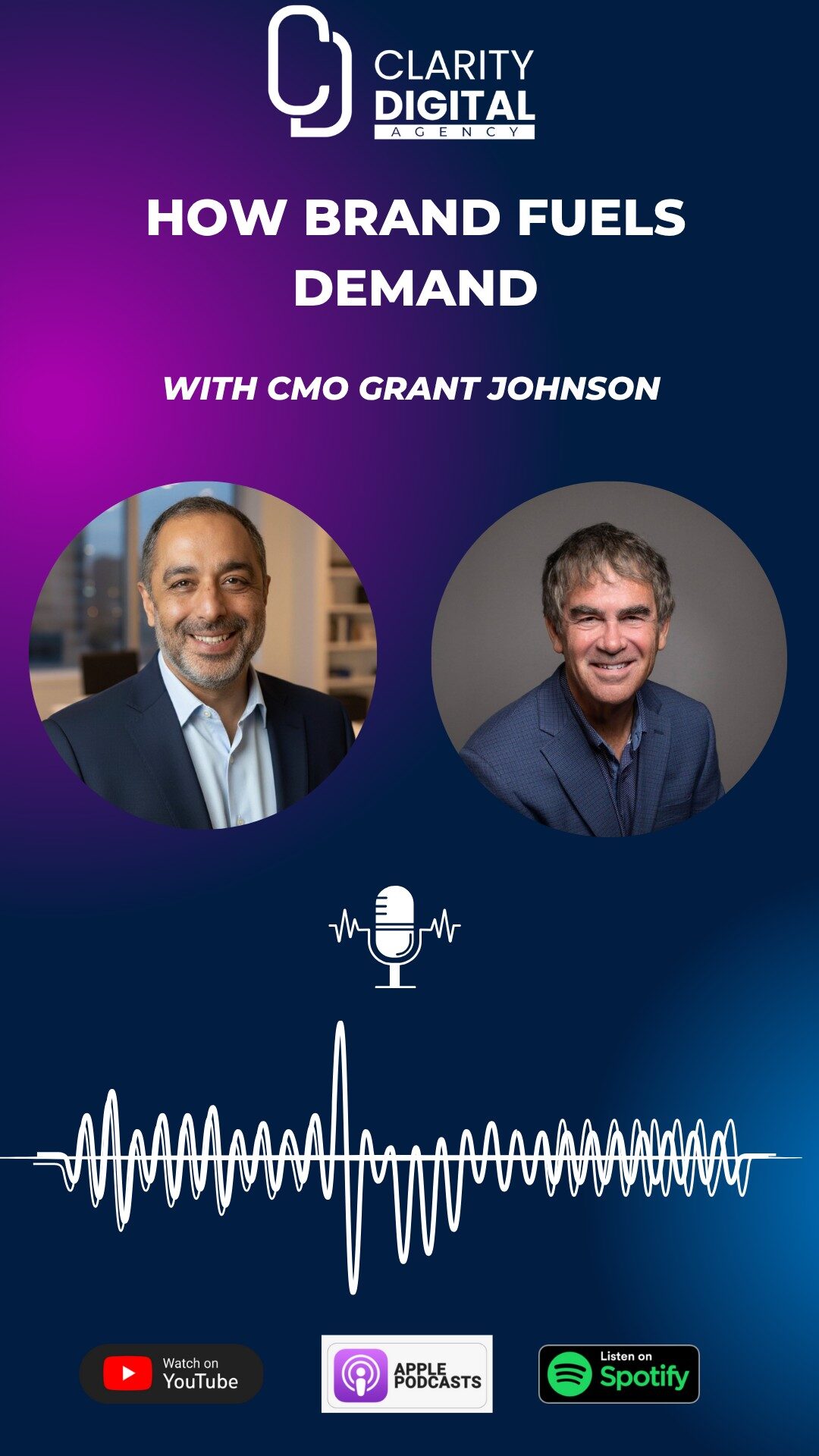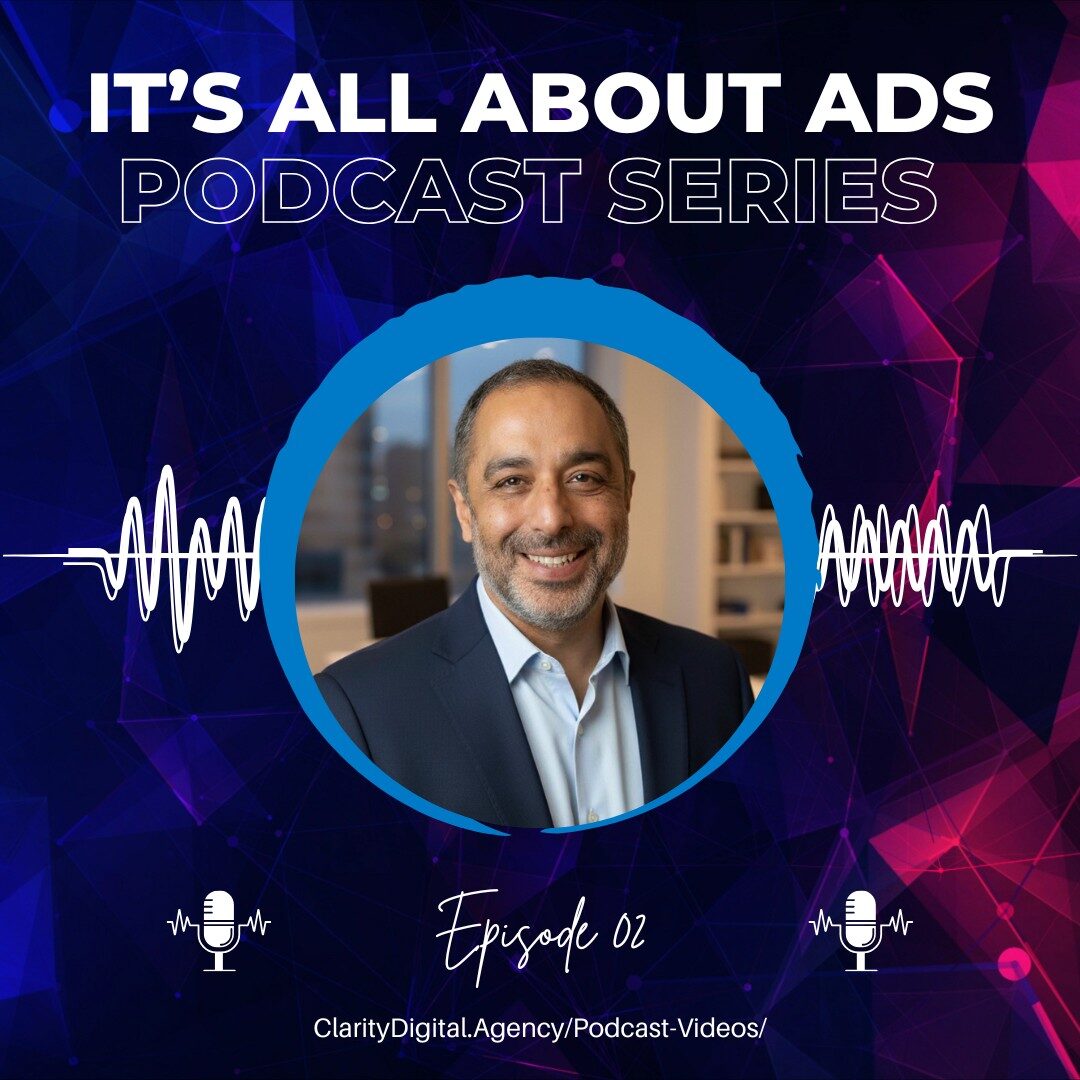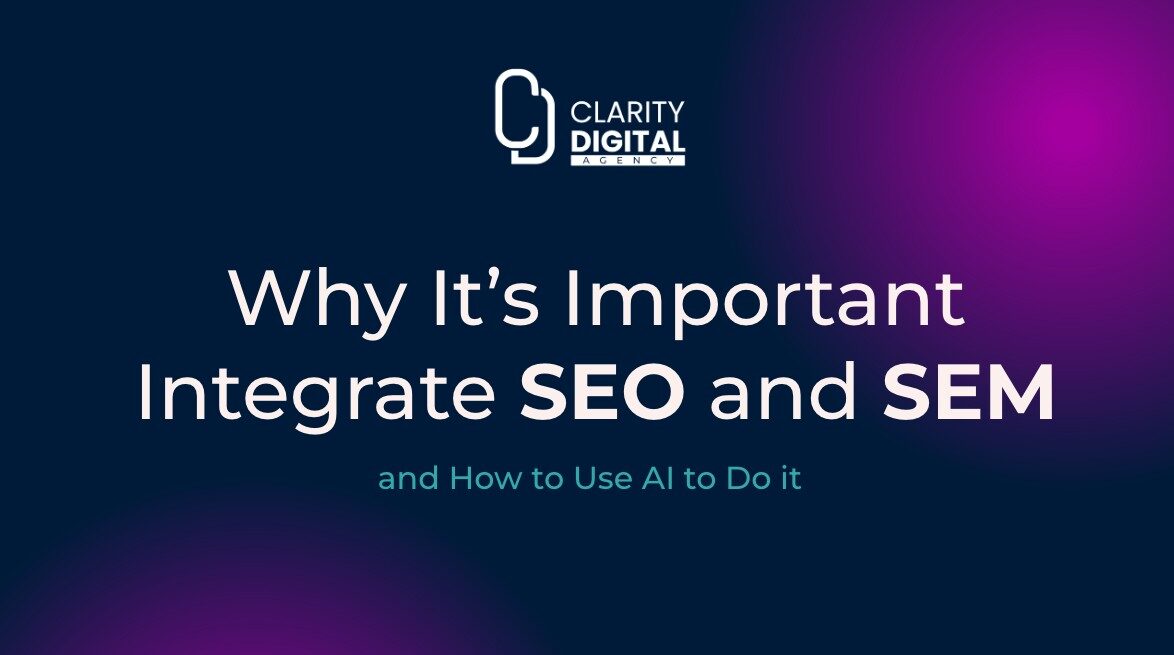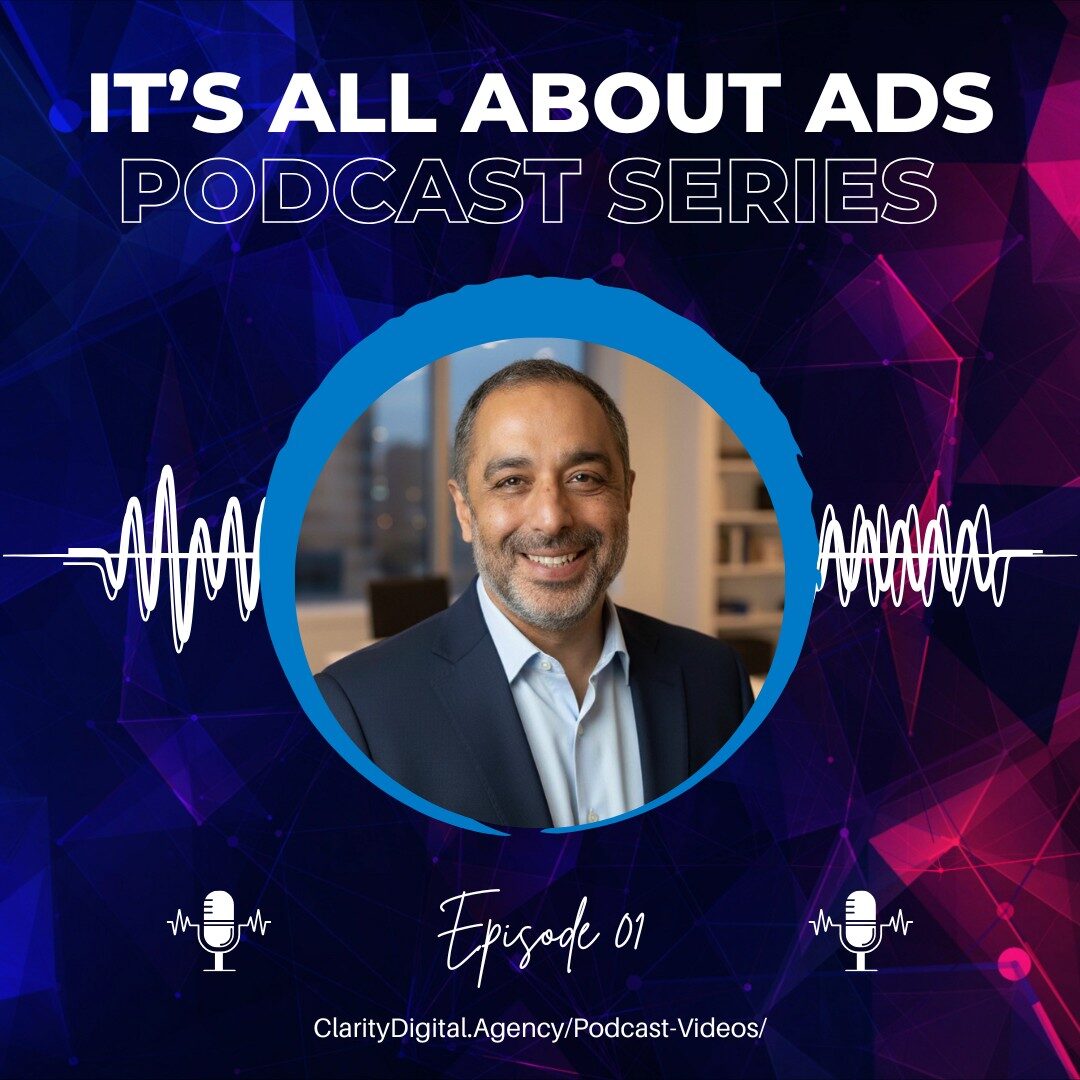In the latest episode of the Clarity Digital Pod, I had the pleasure of sitting down with Grant Johnson, a seasoned marketing executive and fractional CMO at Chief Outsiders. Grant’s career spans startups, acquisitions, enterprise marketing, and now helping mid-sized businesses scale efficiently. What made this conversation especially valuable was our deep dive into a topic that’s been top of mind for many of us in the marketing space — the relationship between brand and demand, and why smart CMOs are finally measuring brand as more than a feel-good initiative.
As someone who’s run both in-house marketing and an agency, I’ve seen firsthand how executives often push CMOs to prioritize bottom-of-the-funnel performance over brand. But Grant shared a framework — backed by data — that shows how brand is not just about aesthetics or messaging, but a long-term investment that drives demand, improves conversion rates, and strengthens pipeline health.
Let’s break down the key takeaways from our conversation.
Who Is Grant Johnson?
Grant is a tech exec turned fractional CMO with a long track record of helping companies grow profitably. He’s worked with startups like FrontBridge (acquired by Microsoft) and larger players like FileNet (acquired by IBM). Now, as part of Chief Outsiders, the largest fractional CMO firm in the U.S., he works with mid-market B2B companies to level up their marketing operations, often stepping in part-time to drive outcomes and build marketing leadership infrastructure.
With over 100 CMOs on the roster, Chief Outsiders brings veteran experience across verticals — whether it’s SaaS, life sciences, consumer, or even wineries. Grant specializes in B2B, and he’s especially passionate about marketing frameworks that help CMOs prove their value to the C-suite.
The Myth That Brand Doesn’t Drive Demand
We kicked off the discussion with one of Grant’s blog posts that resonated deeply with me: “How Brand Drives Demand.”
Especially in this economic climate, where marketing budgets are tighter and sales goals are aggressive, many CMOs are being told to abandon brand initiatives in favor of short-term performance marketing. Grant makes a compelling case for why that’s short-sighted — and potentially damaging in the long run.
“You can have the most targeted campaign in the world, but if someone isn’t in the market today, they’re not going to convert,” Grant said.
This is the reality most CMOs face: 95% of your target market is not ready to buy right now. That means your job isn’t just to capture demand — it’s to create it. And you do that through consistent brand investment.
How Brand Powers LLM-Based Search
As AI and LLMs like ChatGPT, Gemini, and Perplexity change how users search for information, Grant highlighted a new frontier of brand marketing: LLM visibility.
In a traditional Google search, your SEO and PPC can give you visibility. But in LLM-driven responses, AI chooses answers based on authority, trust, and brand recognition within a niche. If your brand isn’t strong or well-cited in your category, you may be invisible — regardless of your technical SEO.
I couldn’t agree more. We’ve seen this firsthand at my agency: stronger brands consistently perform better in AI-based search. The takeaway? Brand equity is the new SEO.
Grant’s Brand Measurement Framework: Awareness, Perception, Preference
For CMOs who want to defend brand investment with hard data, Grant shared a brand measurement framework that he’s used with real clients over multi-year engagements.
He breaks brand measurement down into three pillars:
- Awareness – Reach, share of voice, visibility across channels (including LLMs and SERPs).
- Perception – Sentiment, brand associations, what your market believes about you.
- Preference – Engagement, loyalty, renewal propensity, and win rates.
It’s a practical framework you can build in a Google Sheet and track over time. For one SaaS client, Grant used just four KPIs across these categories to monitor brand lift — and proved a 50% increase in demand as brand investments increased.
As he said, brand and demand should work together, not separately.
“It’s not just about having the better mousetrap. It’s about being the kind of company that customers want to work with.”
From Brand to Pipeline: Marketing Performance Index
If brand equity isn’t enough to convince your CFO, Grant has another ace up his sleeve: the Marketing Performance Index (MPI) — a broader framework to measure marketing’s contribution to growth.
The MPI evaluates three components:
- Market Presence – How well your brand is positioned and visible in your category.
- Brand Strength – Loyalty, trust, customer advocacy.
- Pipeline Health – Conversion rates, deal velocity, pipeline-to-revenue ratio.
It uses 24 metrics, but Grant recommends starting with the 6 most relevant for your business. One of the best parts? You can benchmark your performance against industry data using tools like Benchmarker.ai.
What I liked most about this model is that it’s simple, practical, and scalable — something every CMO should be using in QBRs and board meetings.
“If you invest $100,000 and produce $500,000 in pipeline, you can ask for more budget and show ROI with confidence.”
CMOs Need to Evangelize, Not Just Execute
We also talked about something that resonates deeply with agency leaders: educating clients and stakeholders.
I’ve seen this time and time again. It’s not enough to do good work — you have to frame the data, tell the story, and use visuals and dashboards to explain marketing’s impact. Grant emphasized how important it is for CMOs to build trust and alignment with their CFOs and CEOs — especially when advocating for long-term plays like brand.
Sometimes that means creating financial models around “micro-conversions” (like newsletter signups) or using proxy metrics to assign value to mid-funnel activity. As I shared with Grant, I’ve had clients turn off top-of-funnel campaigns because they didn’t see direct ROI — only to suffer a sharp decline in organic and affiliate performance three months later. Brand was feeding the funnel. But without the right metrics, it wasn’t obvious.
AI in the Marketing Stack
Naturally, we had to talk about AI. As someone working closely with clients, I was curious how Grant and the Chief Outsiders team are integrating AI into their day-to-day work.
Here’s what stood out:
- Chief Outsiders has built its own internal AI tools into their operating system to assist with client engagements.
- Grant uses AI for strategy orchestration, generating detailed prompts to map out deliverables and workstreams.
- He encourages teams to explore tools like ChatGPT, Claude, Gemini, and Clay for workflow automation, ideation, and content development.
- AI is also being used in workshops, where marketing teams use generative tools to build integrated campaigns in real time.
His advice? Don’t wait. Start small, test tools, and train your team to think about AI as a co-pilot, not a replacement.
“Just start today. Figure out what tools are helpful for each role — from demand gen to content. You don’t need to be an expert, just start experimenting.”
A Bit More About Grant
Toward the end of the podcast, we got a little personal — something I like to do with all my guests.
When he’s not working, Grant is out on the tennis court, running the trails near San Clemente Pier, or cooking with his wife and kids. He’s a big fan of Rafael Nadal for his tenacity and mental strength. And if he could be a superhero? It’s Iron Man — because he’s real, flawed, and uses tech for good. Sounds about right for a modern CMO.
Final Thoughts; In Marketing, Brand Drives Demand
This conversation is a must-listen for any CMO, founder, or marketing leader navigating today’s growth challenges. Grant blends data, experience, and strategic frameworks in a way that’s practical and actionable.
If you’ve ever had to fight for brand budget… or if you’re trying to justify marketing ROI to your CFO… this episode of Clarity Digital Pod is one you’ll want to bookmark.





